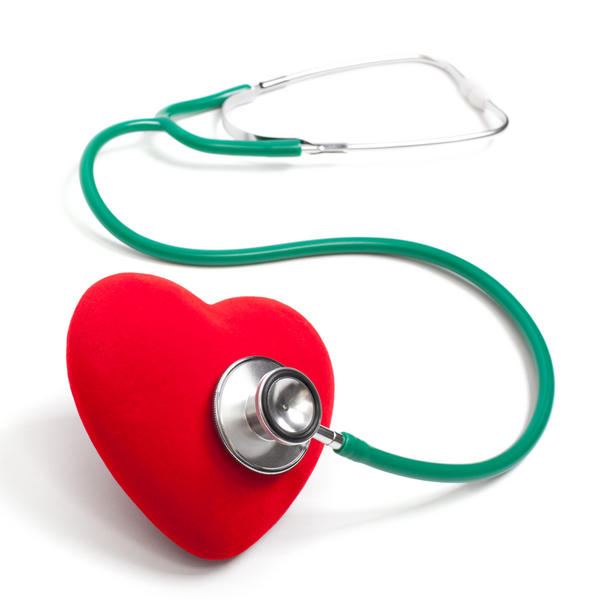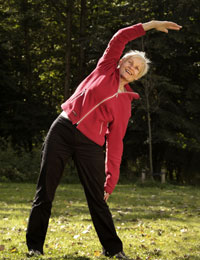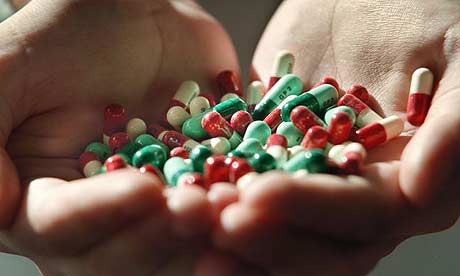 People who smoke take at least 10 years off their life expectancy, a new study has found.On the other hand, those who kick the habit before age 40 reduce the excess risk of death associated with continued smoking by about 90%, according to the study in Thursdays New England Journal of Medicine.
People who smoke take at least 10 years off their life expectancy, a new study has found.On the other hand, those who kick the habit before age 40 reduce the excess risk of death associated with continued smoking by about 90%, according to the study in Thursdays New England Journal of Medicine.
Category: Health
The Risk of Mindless Eating
 What does it mean to mindlessly eat?
What does it mean to mindlessly eat?
Most of us don’t overeat because we’re hungry. We overeat because of family and friends, packages and plates, names and numbers, labels and lights, colors and candles, shapes and smells, distractions and distances, cupboards and containers.
Studies show that the average person makes around 250 decisions about food every day – breakfast or no breakfast? Pop-tart or bagel? Part of it or all of it? Kitchen or car? Yet out of these 200+ food decisions, most we cannot really explain. Mindless Eating shows what these decisions are and how to make them work for you rather than against you.
via Mindless Eating.
Knowing Your Numbers Could Save Your Life
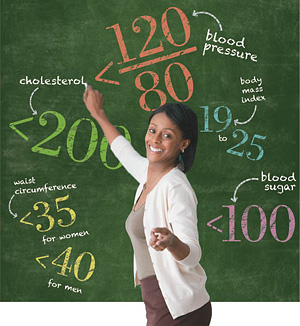 If the oil light comes on in your car do you ignore it or do you bring it to a mechanic to tell you what’s wrong and how to fix it? It’s the same way with your health except you can replace the car but not your health. That’s why it’s so critical to know and monitor your target numbers.
If the oil light comes on in your car do you ignore it or do you bring it to a mechanic to tell you what’s wrong and how to fix it? It’s the same way with your health except you can replace the car but not your health. That’s why it’s so critical to know and monitor your target numbers.
Below are the healthy ranges to work toward. You’ll often see these written out with clinical terms like mg/dL and mm Hg. Your medical provider can explain those terms. For you, the important thing is the numbers themselves:
- Blood Pressure – less than 120/80
- Cholesterol Total – below 200
- LDL – below 130
- HDL – above 50 for women – above 40 for men
- Triglycerides – below 150
- Glucose (fasting) – between 70 and 99
- BMI – between 18.5 and 24.9
It’s important to monitor your numbers regularly by getting an annual physical, blood work and reviewing them with your doctor. It’s to late after you are sick because much of the damage to your body will not be repairable.
via Know Your Numbers.
America’s High Blood Pressure Burden
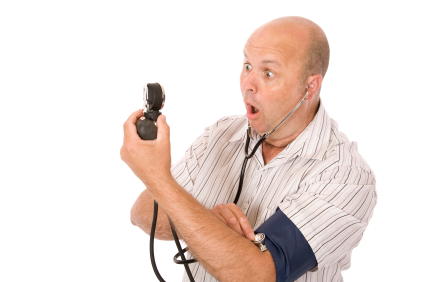 High Blood Pressure is often referred to as “The Silent Killer”. Here are the facts:
High Blood Pressure is often referred to as “The Silent Killer”. Here are the facts:
- About 1 in 3 U.S. adults—an estimated 68 million people—has high blood pressure.
- 69% of people who have a first heart attack, 77% of people who have a first stroke, and 74% of people with chronic heart failure have high blood pressure.
- High blood pressure is also a major risk factor for kidney disease.
- High blood pressure was listed as a primary or contributing cause of death for about 348,000 Americans in 2008.
- Costs directly attributable to high blood pressure for the nation total almost $131 billion annually in direct medical expenses and $25 billion in lost productivity.
- Less than half (46%) of people with high blood pressure have their condition under control.
- Almost 30% of American adults have prehypertension—blood pressure numbers that are higher than normal, but not yet in the high blood pressure range. Prehypertension raises your risk of developing high blood pressure.
- Reducing average population sodium intake from 3,300 mg to 2,300 mg per day may reduce cases of high blood pressure by 11 million and save 18 billion health care dollars annually.
Coronary Heart Disease – 10-year risk
Since it’s beginning in 1948, the Framingham Heart Study, under the direction of the National Heart, Lung and Blood Institute (NHLBI), has been committed to identifying the common factors or characteristics that contribute to cardiovascular disease (CVD). They have followed CVD development over a long period of time in three generations of participants.
Here are the Coronary Heart Disease Predictors:
- Age
- Diabetes
- Smoking
- JNC-V blood pressure categories
- NCEP total cholesterol categories
- LDL cholesterol categories
Click on the link below to calculate your risk of coronary heart disease.
via Coronary Heart Disease 10-year risk Framingham Heart Study.
Healthy Aging – Safe Exercise
- Obtain medical clearance to exercise.
- Stop exercising if you feel pain.
- Don’t exercise when you are injured, sick, or running a temperature.
- Don’t over_strain during exercise.
- Don’t hold your breath during exercise.
- Always warm up.
- Always cool down.
- Drink plenty of water before, during and after exercise.
- Avoid heavy meals for about 2 hours before energetic exercise.
- Use sun screen, hats, visors, and sunglasses during outdoor daytime exercise. Think safety at all times (for example, should you be wearing fluorescent colors? Is it too cold, too wet, too stormy, too polluted, too hot, and/or too humid for safe exercise?)
- Use the right equipment and wear the right clothes for exercise (dress in layers, wear fabrics that allow heat to escape, wear good shoes).
- Work at an effective, yet comfortable, intensity level. You should be able to carry on a normal conversation while working out.
- Use good posture during exercise.
- Stop exercise and consult your physician immediately if you experience any of the following:
- chest pain or tightness in the chest, neck or throat;
- considerable difficulty breathing;
- abnormal heart rhythm; nausea’ dizziness, light headedness, or visual
- interruption; excessive cold sweat; or extreme or lasting weakness or fatigue (after exercise)
via Safe Exercising.
Use Antibiotics Wisely
Antibiotic resistance occurs when bacteria change in a way that reduces or eliminates the effectiveness of antibiotics. These resistant bacteria survive and multiply – causing more harm, such as a longer illness, more doctor visits, and a need for more expensive antibiotics. Resistant bacteria may even cause death.
Parent pressure makes a difference. For pediatric care, a recent study showed that doctors prescribe antibiotics 65% of the time if they perceive parents expect them; and 12% of the time if they feel parents do not expect them. Parents should not demand antibiotics when a health care provider has determined they are not needed. Parents should talk with their health care provider about antibiotic resistance.
via CDC – Family Health – Parents: ABCs of Raising Safe and Healthy Kids.
Workplace Health Programs Increase Productivity
Workplace health programs can increase productivity
In general, healthier employees are more productive.
- Healthier employees are less likely to call in sick or use vacation time due to illness
- Companies that support workplace health have a greater percentage of employees at work every day
- Because employee health frequently carries over into better health behavior that impact both the employee and their family (such as nutritious meals cooked at home or increased physical activity with the family), employees may miss less work caring for ill family members as well
- Similarly, workplace health programs can reduce presenteeism — the measurable extent to which health symptoms, conditions, and diseases adversely affect the work productivity of individuals who choose to remain at work
The cost savings of providing a workplace health program can be measured against absenteeism among employees, reduced overtime to cover absent employees, and costs to train replacement employees.
via CDC – Workplace Health – Business Case – Benefits of Health Program – Increase Productivity.
Home Safety: 5 Tips for Preventing Falls
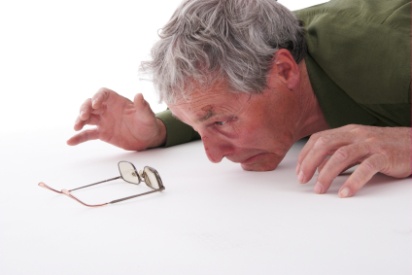 Falls are the No. 1 cause of home injuries and death in the U.S., according to the Home Safety Council. The two groups most at risk for falls are children younger than 5 and adults over the age of 70.
Falls are the No. 1 cause of home injuries and death in the U.S., according to the Home Safety Council. The two groups most at risk for falls are children younger than 5 and adults over the age of 70.
Try these strategies to prevent falls at home:
- Make the bathroom a no-slip zone. Install grab bars and non-slip mats or appliques in the tub or shower. Use a bathmat with a nonskid bottom and clean up any water that splashes on floors right away.
- Safety-proof stairs. Remove clutter from stairs and walkways. Stairs inside and out should have handrails, preferably on both sides. Have good lighting over stairs.
- For babies and toddlers, install hardware-mounted safety gates at the top and bottom of stairs. Pressure-mounted gates are less effective. Gates should have the JPMA (Juvenile Products Manufacturers Association) Certification Seal. Never use accordion-style gates.
- Put a guard on indoor lofts, landings, balconies, and stair banisters if your child can slip between the posts. Plexiglas is a good option because it bends, is easy to cut, and doesn’t shatter.
- Toss the throw rugs. Throw rugs are a big tripping hazard for young and old people. At the very least, tape or tack them to the floor.
- Leave a light on. Ideally, have night-lights in bedrooms, bathrooms, and halls.
- Make windows safe. New York City cut children’s deaths from window-related falls by a third after requiring window guards. Window screens are not strong enough to prevent falls. Install window guards with quick-release mechanisms (in case of fire) on upper floor windows. Keep furniture away from windows, especially in children’s room, and always watch children around windows.
What’s Next After Lean?
Doing more with less by employing “lean thinking.” Lean manufacturing involves never ending efforts to eliminate or reduce ‘muda” (Japanese for waste or any activity that consumes resources without adding value) in design, manufacturing, distribution, and customer service processes.
So what’s “beyond lean” or the “next lean”. I have found that applying “lean” thinking to employee health and productivity eliminates waste in the cost of health care, work comp, absenteeism and presenteeism (at work but not productive). To be successful you need a process or road map. The process is the five steps of risk management. They are:
- Identify Risk
- Analyze Data
- Control Risk
- Finance Risk
- Measure Results
Don’t make the mistake of thinking insurance is risk management. Insurance is not risk management; in fact it is the 4th step of the process. Skipping (or poor execution of) the first 3 steps leads the waste (higher cost) and poor results in step 5.
Payroll, Benefits and Work Comp are typically the highest cost a business has yet in many cases this area is often overlooked for waste.

